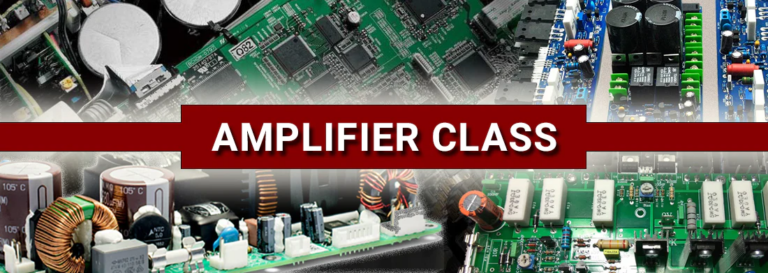An amplifier combines power and signal defines its class. When talking about classes of power amplifiers, there are terms like Class A, AB, G/H or Class D that each mean something significant in audio amplifiers and bring their own value, while also amplifying the input signal without introducing distortion.
Power Amplifier Classes Explained
Class A Amplifiers: A high fidelity amplifier class which is rare and higher on the price point. Each Class A output transistor amplifies both the negative voltage and the positive voltage parts of the signal’s AC waveform, increasing the workload and raising more heat. Class A amps function at a 25% efficiency level and the remaining 75% of their power is turned into heat.
Class B Amplifiers: These cut down the workload of each output stage by replacing the single transistor there with two transistors set up in a commonly referred to as “push-pull” arrangement. The class B amplifiers are more efficient with low fidelity, however, they create more distortion
Class AB Amplifiers: These amplifiers offer higher fidelity and efficiency, the push-pull pair of output transistors in a Class AB amp are each on more than half the time, and they don’t turn on and off abruptly. Class AB amplifiers are a pragmatic choice for home theatre and stereo amplifiers.
Class D Amplifiers: These are not digital devices. Most of the amplifier circuits will be strictly analog. Generally, audiophiles won’t use Class D amplifiers in their systems stating the need for filtering out generated distortion.
Among the different classes of powered amps, class D amplifiers are the most efficient type of amplifier. As compared to other analogue classes such as A, B, AB, and C amplifiers, it has the most superior level of power efficiency.
The technology used in the D amplifier is non-linear switching technology and the output devices may be turned on or off.
Which Power Amplifier Gives Maximum Distortion?
Distortion is undesirable in audio amplification and affects the fidelity and accuracy of sound reproduction. There are certain factors that can lead to greater levels of distortion in different amplifier designs.
In class C amplifiers, the transistor conducts for less than one-half cycle of the input signal (i.e. conduction angle is less than 180° around 80° to 120°). The reduced conduction angle boosts the amplifier efficiency but creates higher distortion. Lesser conduction angle translates into higher levels of distortion.
The key factors to consider to ensure optimal sound quality
- Power efficiency
- System compatibility
- Personal listening preferences
- Distortion characteristics
Finally, it would be a good idea to get in touch with our Ooberpad professionals if you need assistance or have any questions about power amplifier price and key distinctions in the power amplifier classes.

